Simon Blumenfeld Jew Boy
A somewhat confrontational title which, according to
Ken Worpole in his comprehensive introduction here, still ruffles sensitive
feathers. But the book itself is a somewhat less gritty read than the other
between-the-wars novels published by
London Books Classics
by the likes of Robert Westerby and Gerald
Kersh, reviewed below. Alec works in the rag trade and is looking to get
laid and/or married very soon. His anguish at achieving neither of these goals
is expressed against a background of 30s political protest and the details
of Jewish life and observance. You'll maybe be reminded more of Rosamund
Lehmann and Elizabeth Taylor in the emotional and playful tone, rather than
the lowlife criminal atmosphere we expect from LBC. Alec and his mates and
their demands and girlfriends make for more of a slice-of-life narrative
than the knife-fights and thieving we have come to expect from working-class
types in the mid-20th century. The politics and plotting can seem a little
dated and naive(ly hopeful), but this is still engaging and readable, with
much evocative period detailing and attitudes.
Jessie Burton Hidden Treasure
The day that this book begins is a busy one for Bo, a
Battersea mudlark. Her brother goes off to war, the Thames, always a
presence for her, speaks to her, and she finds a bejewelled and magical
disc representing the moon. The last two events seem connected, and then
along comes a boy from the other side of the river who the river has also
communicated with, and who knows more about the strange disc. The
characters who turn up, as things become a little clearer, are rarely what
they seem, or claim to be, but the deception and peril are mild, this
being a book for 4-9 year olds. The story is nonetheless involving and
magical, and reeks of the river.
Norman Collins
London Belongs to Me
First published in 1945, this has a fair claim to
being one of the
novels of London life during WW2. It takes the inhabitants of the flats
on all floors of a big old house in Kennington from 1938 on into the
war. It's a slice of real humanity at the time, taking in low life,
family life, faded glamour, life ending, lives beginning and all the
actions and emotions, noble and despicable, that get stirred up along
the way. Words like teeming, tapestry, Dickensian, and flipping long
are all justified. Along the way there's incidental pleasures, like the
appreciation of the kind of crap that was eaten before the Italian and
Indian food fads of later decades. You could say that it's soapy, but
that would be unfair - this is what soaps want to be when they grow up.
It's also very funny, in a way that keeps you grinning all through, if
not laughing out loud. It's not cool (or cold) enough to be a cult
novel, and not idiosyncratic or deep enough to be a real classic. But
it is nonetheless a soundly enjoyable and moving read. An odd thing I
noticed is that, although there is next to no travel on the Underground
in this novel, the majority of its locations, and even places just
mentioned in passing, are on the Northern Line.
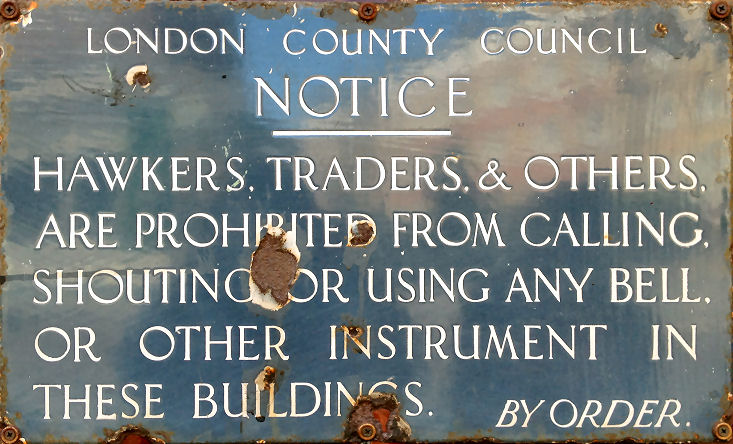 |
|
Maureen Duffy
Wounds 1969
The first of the novels in Duffy's London trilogy takes us into the minds of
various disparate characters whose connections become apparent as the pages
progress. This streaming style makes for some occasional confusion, as a
section starts and you take time to realise who it deals with, but not
so much as to spoil the flow. Early on there's an odd recurrence of horse
memories, or metaphors, and a common-ground pub emerges. A lesbian gardener of
mature years starts us off, and we pass through various colours of skin and
ages and classes, with wartime memories still strong and damaged lives a
common thread. We return regularly to a pair of undamaged lovers in bed,
talking loving tosh and exchanging fluids, in a way that seems to be ironic
counterpoint to grim real life, but I suspect is not so simply intended. The
London (and period) flavour is strong, but more in spirit than topographical
description - mention of a common and some pub names is about as specific as
the scene-setting gets. The fun-fair later on may well be Battersea, so the
common might be Clapham. One of the characters, a mayor, is pondering the
impending amalgamation of some London boroughs, which happened in 1965 -
some precise dating then. A novel very much of its time, in style and
content, but full of flavour and worth the effort.
Capital
1975
This second book in the London trilogy can now be seen as an
early incarnation of the whole Ackroyd/Sinclair thing about London's
history going in many more directions than
simply forward and back in a straight, historically-accurate, line.
Down is the
direction dealt with here, with the central character, Meepers,
obsessed with
the bones beneath our feet and the stories they tell. And the stories
they tell,
mixing history and myth, are interspersed with his story in a
time-jumbling way
which was once seen as scarily modern, as Paul Bailey observes in his
introduction, but which we are now more used to. Meepers's major
obsession is
whether the post-Roman period of London's history is really as dark as
it's
painted. (The Museum of London represents this time as simply a
pile of fragments
of classical architecture strewn amongst weeds.) This isn't as gothic
as an Ackroyd, or as dense as a Sinclair, but it's pleasingly dark in
places, with the
past painted in all it's grubby grimness, but with a balancing element
of
humanity and warmth you'd expect from a book written by a woman, if
you'll
pardon my stereotyping. It's nicely of its time - a time when some
proper bus
routes ran open-top buses, not just tourist trips, and when you could
share a
flat in London for £7 a week. One of the key London novels.
Londoners 1983
The last one. |
|
Christopher Fowler
Full Dark House (Bryant & May Book 1)
Beginning a series with the death of one of your named
protagonists seems a little unorthodox. Events in the present day relate back
to our heroes' first case back in a blitz-ravaged West End. A series of
murders at the Palace Theatre are united in their gruesomeness and inexplicableness.
The Peculiar Crimes Unit is called in and prove that it's not just the
crimes that are peculiar. As it's Bryant and May's first case together the
mutual sizing-up gives us sharp glimpses of their characters and hang ups, and looking
back allows hindsight and a broader perspective on their peculiarities.
Bryant and May are a bit Holmes and Watson but with Bryant a bit more
peculiar and the relationship a bit more equal. All very clever, and the
detail and atmosphere that the author provides and evokes conjures a London
that gets up your nose and clings to your clothing. The realities of life
during the blitz have never been more...real. The murders turn out to be all
dictated by the stories contained in Greek myths, or do they? All very
clever, as I say, and I look forward, but with a little trepidation, to
reading the rest.
Anthony Frewin
London Blues
The
author's day job was assistant
to Stanley Kubrick, but here he explores less reputable, but more
frequent, film-making. It's the 1960s and our hero works in a Soho café
and
becomes involved in pornography, progressing from taking grainy snaps
to
shooting grainy 25-minute films with titles like Schoolgirl Frolics
and
The
Randy French Maid. His shady dealings with Stephen Ward get him
embroiled in the Profum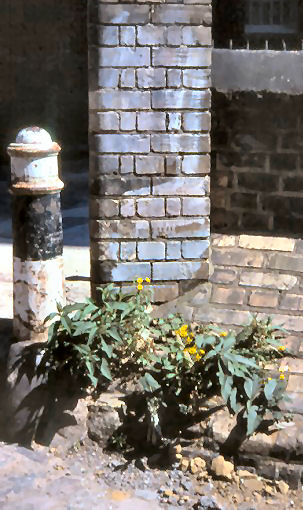 o affair. The book paints an authentic-seeming picture
of London in the mid-60's, a time when the minor railways could still be
said to 'criss-cross London with a secret logic of their own'. The locations
and odd facts keep the London-interest factor high. (Evidently if you wanted
pornography in London in the 18th or 19th century
you went to Holywell Street which was amongst a warren of streets - demolished
in 1901 - at the bottom of Kingsway, where you'll now find the Aldwych
and Bush House. A character in
Fingersmith above ventures
here.) The relationships are believable and you care about the
characters - both further signs of a book well worth reading. o affair. The book paints an authentic-seeming picture
of London in the mid-60's, a time when the minor railways could still be
said to 'criss-cross London with a secret logic of their own'. The locations
and odd facts keep the London-interest factor high. (Evidently if you wanted
pornography in London in the 18th or 19th century
you went to Holywell Street which was amongst a warren of streets - demolished
in 1901 - at the bottom of Kingsway, where you'll now find the Aldwych
and Bush House. A character in
Fingersmith above ventures
here.) The relationships are believable and you care about the
characters - both further signs of a book well worth reading.
Neil Gaiman Neverwhere
When an injured
girl called Door falls into a
London street, from a door that isn't there, at the feet of Richard
Mayhew, he
stops to help her without thinking. And so begins his descent into a
subterranean
London where each dark tunnel leads to strange places, stranger people
and odd
creatures, and the danger of death. Myths from London's past are played
with and place names come alive,
as London's history takes on new dark depths. It's all big gruesome
fun, with a
couple of the nastiest vampire hit-persons you're ever likely to meet.
The
writing owes a lot to Terry Pratchett, in its humour and its timing
and Gaiman did collaborate on a novel with Pratchett, so a little
rubbing off is
understandable. He'd obviously been reading a bit of Anne Rice too.
This one is
played a lot for laughs, albeit gruesome ones mostly, and does not have
the
conviction and depth of characterisation of the later and better
American
Gods, but it's still essential reading for fans of London's myths and
tunnels. One small gripe - why does the author, an Englishman writing about London,
refer to sidewalks? Pavements is what we have over here, not sodding
sidewalks.
Neverwhere was made into a TV series in the UK in 1996 , which came out on
DVD in the UK in 2007, the same year that a graphic novel appeared. In
2016 an edition of the book illustrated by Chris Riddell appeared. It's cute, with many
full page drawings and loads of little ones in the margins too. In 2019 the
TV series came out on Blu-ray, upscaled. |
Jeremy Gavron An Acre of Barren Ground
This one's a sequence of
self-contained, but sometimes strangely linked, chapters dealing with the
history of Brick Lane. It covers a span of Centuries, but I've put it here
in the early-20th as then was the area's most famous time, possibly. There's
also a wide range of formats, including quotes from news reports, a poem,
photography, a graphic novel, and other forms of fruitfully fractured prose.
Major themes unsurprisingly include the lives of Whitechapel's various waves
of immigrants, anarchist politics, and the Ripper murders, but these are far
from all, as characters briefly come to life and are left behind as you're
propelled into another different century before you can catch your breath,
inviting the use of words like 'kaleidoscopic' and 'rich tapestry'. A topic
new to me was the corruption of the area's brewing industry. Calling this
fractured, if fascinating, read a novel is pushing it a bit, but it covers
the ground, as it were, and points to further investigation of its sources,
listed at the back. One section deals with the bird trade back when the
Sunday market was called Club Row, after the street where small animals were
sold, sometimes out of street-corner dealers' pockets, until the law caught
up with the painted birds and poor conditions. It brought back strong
memories for me of peering into cages at balls of fluff and feathers on Sunday mornings
in the 60s with my Dad.
Graham Greene
The Ministry of Fear
My primary prompt to read this book was a love of
Fritz Lang's film of it. Large liberties with the source novel were
reported, and such turns out to be the case. The memorable opening of the
film, for example, involving a man's release from incarceration, his
attendance of a garden fete (at night!), and the strange business of the
blind man on the train to London and the pursuit through the weird
countryside, are all Lang's invention. In the novel our hero's story is
picked up in London, where he happens upon a fete in a city square, and the
winning of the fateful cake and all the business with the fortune teller
happens here. But the main difference is how the later explosion which
propels him into the hands of the police in the film, in the book puts him
happily into a nursing home, with no memory of how he got there. And the
whole business of how his not remembering the almighty guilt-inducing
tragedy of his life leads to his becoming a different, and happier, man,
forms the major, and most memorable, theme of the book. So the novel
provides a different satisfaction from the film's, but with eerie echoes. It
also paints a vivid and authentic picture of life during the blitz, where
you can turn a corner into a familiar street, once full of memories, and it's
all gone. At one point Greene talks of a 'strange torn landscape where
London shops were reduced to a stone ground plan like those of Pompeii'.
Patrick Hamilton
Twenty Thousand Streets Under the Sky
Set in London between the wars, this is a trio of stories
dealing with the lives of a trio of characters connected with a pub. The pub
is called The Midnight Bell and is situated on Warren Street, near the
junction of Euston Road and Tottenham Court Road. (There's a real pub in the
area called
The Prince of Wales Feathers which was a favourite of
Hamilton's.) The characters are Bob, the waiter, and Ella, the barmaid of
the pub, and the prostitute for whom the waiter fatally falls, called Jenny.
The first book painfully details Bob's desperate and self-deceiving need to
imagine her love as he spends all his money on her and misinterprets her
need and deception. The second part concentrates on the episode in Jenny's
early life that formed her character and career. The last part is centred
around Ella. It's a very London-exploring novel - Soho especially gets
walked through comprehensively, and there are excursions into the fleshpots
of Hammersmith and Chiswick. And like most novels of the early 20th century
reading this makes one mourn again the passing of the Lyons Corner House. If
you'll pardon a flurry of clichés I have to say that the characters live and
breathe and that Hamilton does a definitely Dickensian thing with humorously
decorous language and lovable/hateable low-life characters. He lived the life, of
course, drinking to excess and an early death, and having his own unhappy
relationship with a prostitute just prior to this book's publication. An essential gem of London fiction.
Tobias Hill Underground
Women are getting pushed under Tube trains and a tube worker
becomes obsessed
with a rough-sleeping woman who looks a lot like the victims. Beyond
this bald
statement of plot is woven a story of secret tunnels, security, threat,
and much
real dirt. There's a parallel plot strand telling of our hero Casimir's
childhood in post-war Poland, which alternates with the main plot
through the book, but which is fascinating enough in itself not to make
one
yearn for the return of he 'real' story. A novel to perfectly
complement
the facts and myths about the London Underground as touched on in my
dark
Tunnels
and Underground Stories page.
Gerald Kersh The Angel and the Cuckoo
Another rediscovered gem from
London Books Classics,
and you'll note the lack of inverted commas back there, as this truly is a
novel that'll repay your attention. The action revolves around Steve Zobrany,
the Hungarian owner of The Angel and the Cuckoo cafe, who sees good
in everyone, even Gèza Cseh and Thomas Hardy. These last two generate most
of the tales that spin off the story of Zobrany. The first is a sharp
operator who ends up in Hollywood, the latter an artist almost totally
lacking in feck. These tales span the first few decades of the 20th century
with two wars looming darkly in the background. The foreground lives here
are mostly low and bohemian, taking in cons and criminality aplenty. The
overall tone is humourous, but bittersweet - this is a book about life and
love and human weakness, not chucklesome set-pieces. Sometimes Kersh gets a
bit carried away into florid language and somewhat pointless excess, but a few
paragraphs skipped soon gets you back on track. This early-20th century
London underbelly stuff is becoming a bit unrare, but when it's chucking up
good stuff like this let's not complain. Kersh is also the author of
Night and the City, which was made into a famous film, or two. |
|
John Lanchester Mr Phillips
In which a middle-aged accountant gets out of bed one warm
July morning and does his usual commuting thing from Clapham into town, but this
is not going to be a usual day for Mr Phillips. He's just been sacked, you see,
and so he's just pretending to commute, and ends up having one hell of a day.
His walk through London, from Battersea eastbound into Westminster, is
recognisable in its sights and details, and makes for a fragrant picture of
London life and Londoner's habits as the Millennium turns. He thinks about sex a
lot too, and has a Nicholson Baker-like interest in the minutiae of life. He visits
his son, a sex cinema, and the Tate Gallery, amongst other places, and gets
involved in a bank robbery and street theatre. A believable and
compulsive tale - it's just like being there and doing it.
China Miéville King Rat
When Saul returns to his Dad's tower-block flat he doesn't relish a
confrontation, so he goes straight to his room and sleep. He's awakened by
big noises as the police gain entry. They drag him away and he notices the
ragged hole in the window through which, it turns out, his father had been
forcibly ejected a little earlier. So begins Saul's unique tale, during
which he finds out his mother was a rat, literally. The story mixes myth and
muck, modern music and violence, grime and murder - the result is a weird
and occasionally nasty tale of a man whose life becomes a big confusing mess
as he becomes aware of his background, and the nature of the man who is
pursuing him and murdering his friends. It's heavily wrapped up in the drum
'n' bass music scene of the mid-90s, and hence has dated a little quaintly,
as d'n'b has failed to live up to its promise as THE millennial
multicultural music and is now a pretty minor influence, surviving in its
mutation into grime.
But the breakbeats do add a sharp flavour to the mix of traditional
storytelling and urban degeneration, with horror-film touches. Not a book
you'll forget or read anything else like real soon, I think. Also
anyone who can get all elegiac about Willesden deserves our attention.
Un Lun Dun
This is a book for older children/young adults which
attempts to mix a bit of Buffy and recent Dr Who into Alice in
Wonderland, with added mobile phones and snappy youf-talk.
The story sees two teenage girls dropping into an alternative London, where all
the rubbish goes, and which is plagued by a sentient evolution our old 1950s
smog, here called Smog. One of the girls, Zanna, is the chosen one, who, it is
said, will come and vanquish all foes. The other is called Deeba and befriends a
milk carton called Curdle. There's a crack team of martial-arts trained rubbish
bins called The Binja, and the boss of the very handy broken umbrellas is called
Brokkenbroll. I know that I'm not the target audience here, but I can't see a
teenager having any more patience than me with a book whose plot hardly zips
along and rarely surprises, and which has a certain flatness of characterisation
and detail. There's masses of weird stuff all around, but not much texture. File
under Large Disappointment.
David Mitchell Utopia Avenue
The title of the book is the name of a band. Both are full of typical
1960s middle-class hippies and attitudes. The band have good gigs and bad
gigs, good friends and blazing rows, famous friends - 'hi David', 'Hi
Marc' - and puzzled parents. London glowers all around and is full of
dolly birds, pop stars and fag smoke. As the book begins the big-draw
well-brought-up female member has just had her duo broken up by her
partner skipping off to Paris, so she's all weepy and heartbroken, but
this schmaltz is countered by the mercurial-genius guitarist having an
interesting mental illness, and so prone to hallucinatory interludes. Add
to this all the older people who tell our male heroes that their hair is
too long and that they look like nancy boys, and that national service would
have sorted them out, and you have a novel seemingly inspired by 60s
sitcoms. But this is a serious novel by a big-name author, so there's more
to it, but not much. I managed about 25% but was still not
caring. Unambitious.
Michael
Moorcock
Mother London
This is one of the essential London
novels of the past couple of decades. It came out in 1988, has long been
out of print, but was reprinted in 2000, in a tasteful yellow-painted
brick binding, to tie in with the publication of a sequel, called King of the
City. It's the kind of novel you don't see on the New Novels shelves
anymore - a work of real imagination, and featuring a city you'll
both recognise and be surprised by. It traces London life from the Blitz
to the slightly subtler disaster of Thatcherism, through the eyes and lives of a
bunch of characters who may be mad, or who may just be tuned into the thoughts
of all their fellow Londoners. It leaps around in time but builds
up a picture and an idea of London that you won't soon forget and which
will probably skew your perception lastingly and totally. No, really.
The Whispering Swarm:
Book One of The
Sanctuary of the White Friars
And having not had a proper new novel out in 10 years, in 2015 MM suddenly
presents us with this puzzling offering. I say puzzling because it mixes
autobiography with (fantastic) fiction and also because the prose is oddly
simplified, like maybe he originally set out to write a children's or YA
book. The story tells of teenage Michael Moorcock's life and early career in
a very real and detailed 1950s London, centred on his home in a fictional
area near the Holborn Viaduct called Brookgate. As he starts out on various
literary careers he meets a monk who brings him to an oddly
untouched-seeming patch of the Medieval/Georgian/Victorian city where he
becomes smitten with a gorgeous highwaywoman and meets sundry other
characters he'd only previously dreamed of. But with the advent of the 1960s
and sex the boy convinces himself that it had all been a dream. Much
dropping of names and trousers ensues.
|
|
Alan Moore
The Great When
The author is the wild-haired and magusy author of many famous comics,
including The Watchmen, V for Vendetta and The League of
Extraordinary Gentlemen. The star of this novel, the first of a series
of four, is Dennis Knuckleyard, who is 18 and living in Shoreditch in 1949,
above the bookshop of Coffin Ada, his belligerent and consta-coughing
employer and landlady. As if the idea of a bookshop in post-war Shoreditch
wasn't fantastical enough... when he is sent to Berwick Street to collect a
job-lot of Arthur Machan novels and finds the box contains another book, a
dangerous book , it gets him propelled into Long London. This is the other
London which exists parallel to our London and which contains all Londons -
real or imagined - a sort of Fictional City if you will. The writing is
fruity and purple, generally, and when the action moves to Long London it
becomes seriously hallucinogenic and self-indulgent and even more hard to
follow. You'll find your attention skipping, but the real-London-set
language can be more easily followed and repays your stamina. The characters
are far from clichés and the dialogue is smart. Prince Monolulu plays a
crucial part, he having been the only black man you saw in post-war London,
my Dad always said. TheLondon evoked here hadn't changed much by the time I
was walking some of these streets - Spitalfields and Shoreditch are central
- in the 1960s, and playing on bombsites. This book is heavily indebted to
the 1980s psychogeographic novels of Ackroyd and Sinclair and there's
nostalgia in that too. The last chapter, where Dennis looks back from 1999
is, well, weird in another way. What next? We'll see.
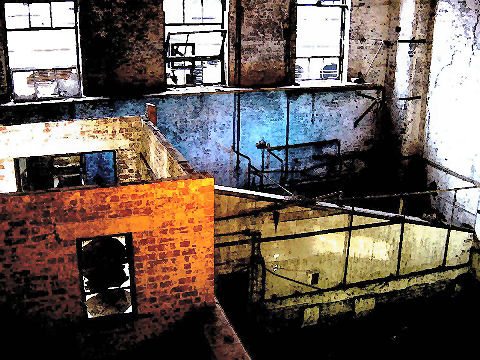
Iris
Murdoch
Under the Net
Having been an all-consuming Iris fan in my 20s and 30s I thought that it
was high time - decades on - for a revisit. And where better to start
than the beginning. Her first novel jumps straight into her characteristic
philosophical and political concerns, this time dealing with a self-obsessed
translator of other people's works. As the book is set in the early 1950s
Jake is not called a slacker, but he does very little, lives off his
friends, drinks to excess, and sleeps on Embankment benches with the best of
them. His sense of his own wisdom and powers of perception is in no way
dented by his getting almost everything wrong. There's more humour than I
remember, some spectacular set-pieces (no, really) and the reading is easy.
Post-war London is authentically evoked, with Hammersmith something of a
centre. But there's also a lot of the action around the actual central City
of London, which is somewhat rare, with some of the characters actually
living there. Especially worthy of mention is a pub crawl around St Paul's,
taking in bombed churches, the shells of warehouses, and a midnight
skinny-dip in the Thames around the barges. Fragrant.
Flight of the Enchanter
Novel number two is set around Kensington and into
Chelsea. More rich people live lives of small problems and big drama, this
time united by the controlling charisma of a shady press baron. Not so rich
in London detailing this time, although the press baron's London home - four
houses in two rows knocked together to make a mansion of puzzling
interconnecting rooms with no passages or corridors - is a fascinating
invention. Set in the 1950s - a strange past time when a pale and perky
teenage girl-about-town would still wear petticoats. Psychologically acute
as ever, and readable, with some bizarre and funny set pieces.
Geoff Nicholson Bleeding London
An A1 example of the kind of book
this site is about - a book about London, a book which deals with London
as it is, and London as we think it is, and how the two can differ and
become closer. A Tarantino-esque thug with wit is down from Sheffield;
he's lost, but he's got an A to Z and a big gun and he's tracking down
the yuppies who gang-raped his girlfriend. The boss of a London walks company
attempts to put some meaning into his existence by walking up every street
in the city he (still) loves. The pair are doomed to meet,
and both get screwed and screwed up by a half-Japanese girl who thinks
maybe she IS London: "There are security alerts. There's congestion,
bottlenecks. Some of me is common...I have flats and high-rises." There's
maps, there's facts, there's kinky sex, there's a slight lull in the
middle as the conceits wear off and the plot coasts, but there's wit,
humour, informed love of London, Sharpe writing, and an imaginary bookshop
that truly deserves to exist. |

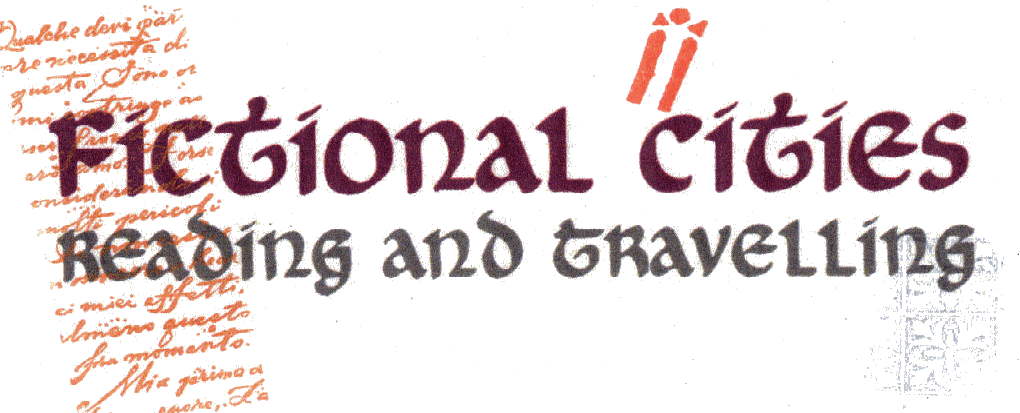



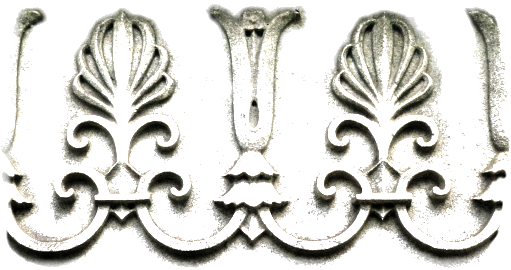
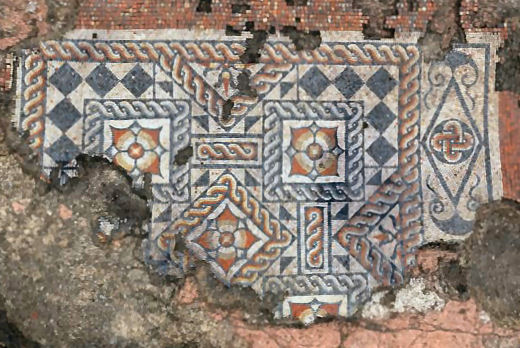
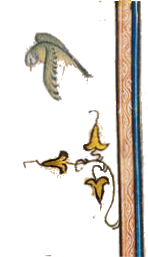

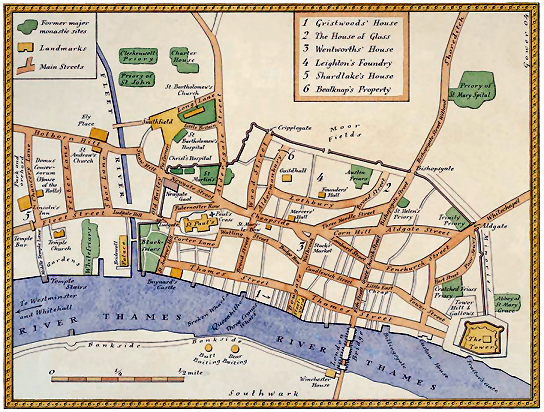 The
first book Dissolution takes
place against the backdrop of the dissolution of the monasteries and sees
Matthew Shardlake, lawyer, hunch-back and supporter of Reform, sent by
Thomas Cromwell to a Sussex monastery to investigate a grisly murder and the
theft of relics. There is solid history, gripping plotting and detail, and
atmosphere you can taste, but not a lot of London.
The
first book Dissolution takes
place against the backdrop of the dissolution of the monasteries and sees
Matthew Shardlake, lawyer, hunch-back and supporter of Reform, sent by
Thomas Cromwell to a Sussex monastery to investigate a grisly murder and the
theft of relics. There is solid history, gripping plotting and detail, and
atmosphere you can taste, but not a lot of London. 
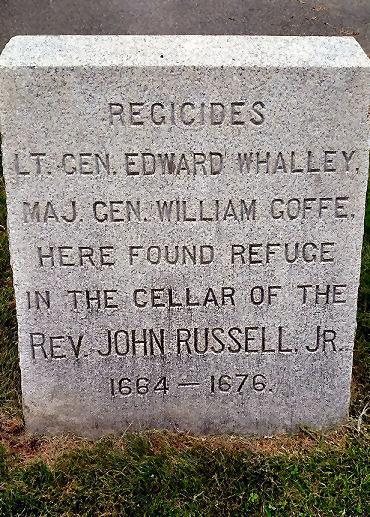
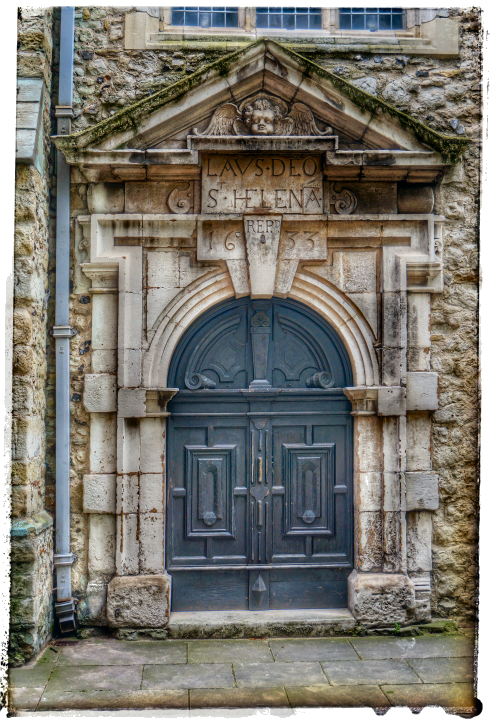
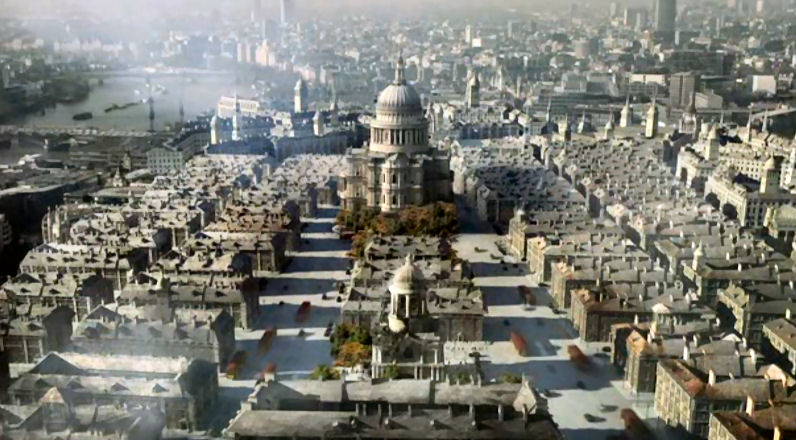

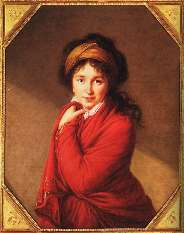
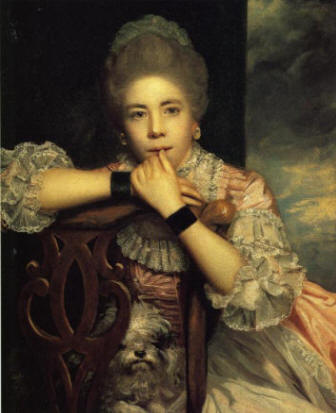
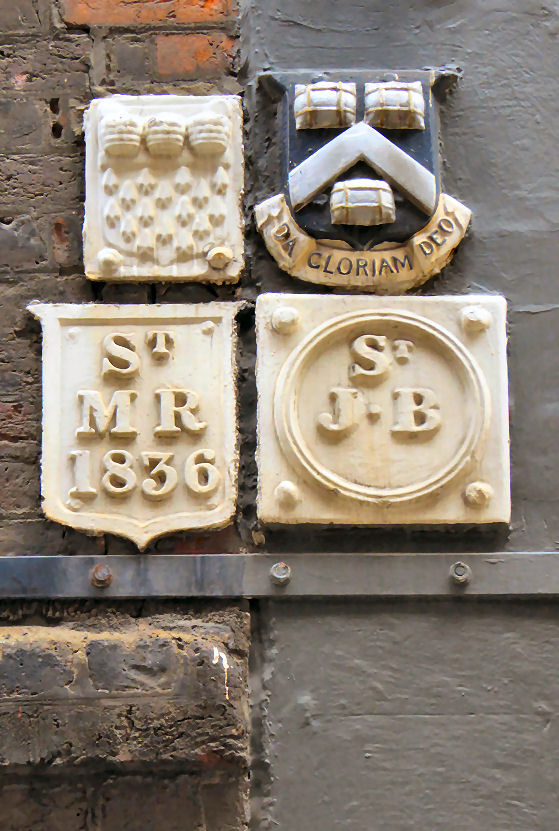
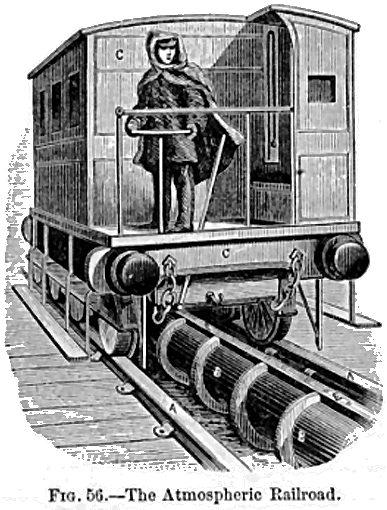
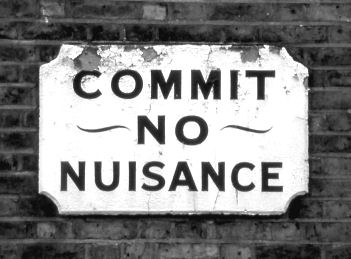
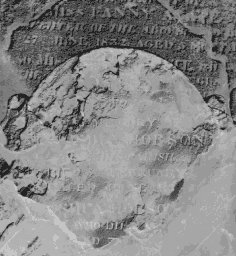

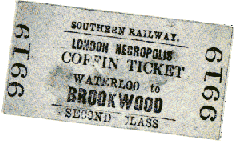 himself in 21st-century London' which is just not so. He
finds himself in London in a short, but powerful, coda in the last few
pages - not at all what I'd call 'soon'. But as a book about Dadd and
attitudes towards mental illness in Victorian times this effortlessly
conjures its times and grips and impresses mightily.
himself in 21st-century London' which is just not so. He
finds himself in London in a short, but powerful, coda in the last few
pages - not at all what I'd call 'soon'. But as a book about Dadd and
attitudes towards mental illness in Victorian times this effortlessly
conjures its times and grips and impresses mightily.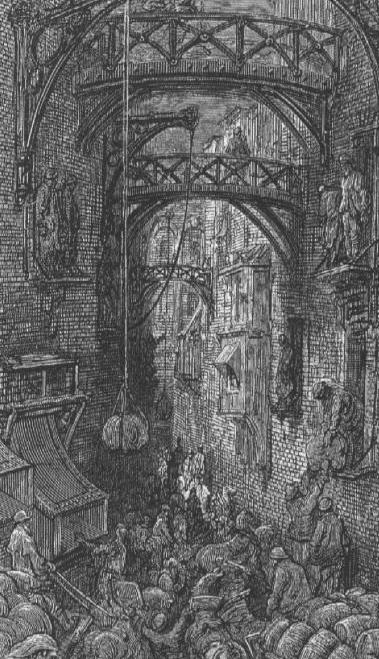
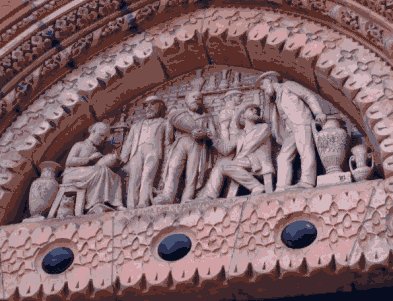
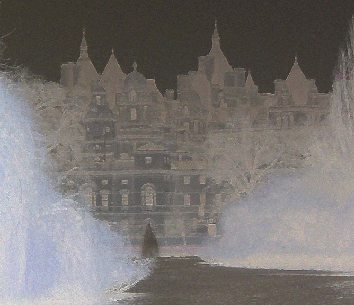
 o affair. The book paints an authentic-seeming picture
of London in the mid-60's, a time when the minor railways could still be
said to 'criss-cross London with a secret logic of their own'. The locations
and odd facts keep the London-interest factor high. (Evidently if you wanted
pornography in London in the 18th or 19th century
you went to Holywell Street which was amongst a warren of streets - demolished
in 1901 - at the bottom of Kingsway, where you'll now find the Aldwych
and Bush House. A character in
o affair. The book paints an authentic-seeming picture
of London in the mid-60's, a time when the minor railways could still be
said to 'criss-cross London with a secret logic of their own'. The locations
and odd facts keep the London-interest factor high. (Evidently if you wanted
pornography in London in the 18th or 19th century
you went to Holywell Street which was amongst a warren of streets - demolished
in 1901 - at the bottom of Kingsway, where you'll now find the Aldwych
and Bush House. A character in 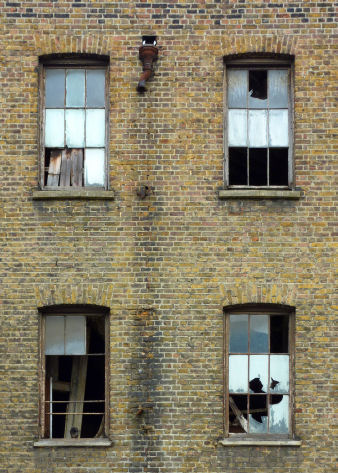

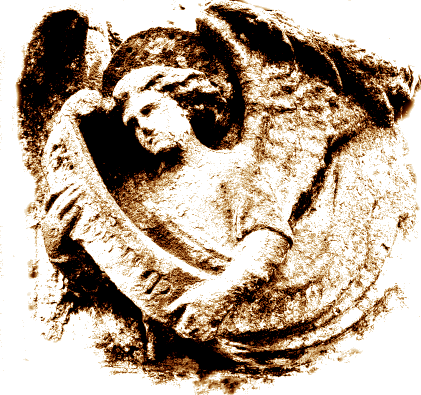
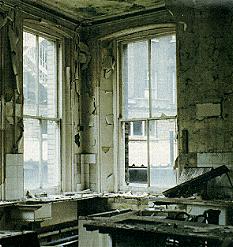
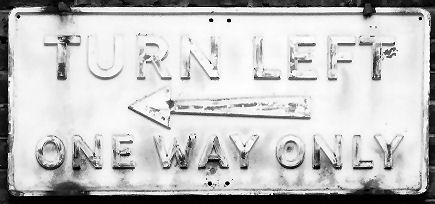
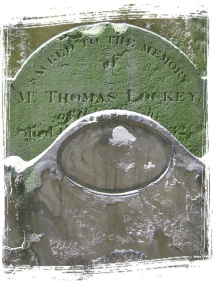
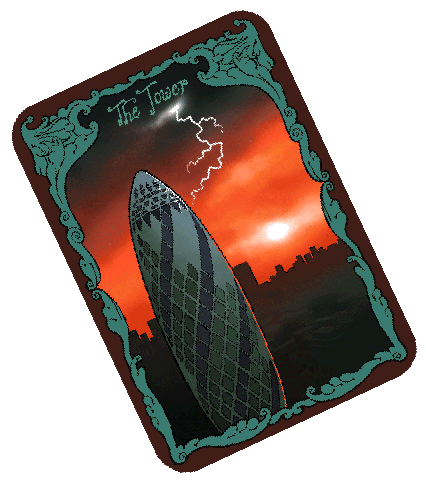
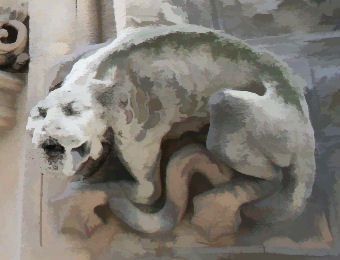
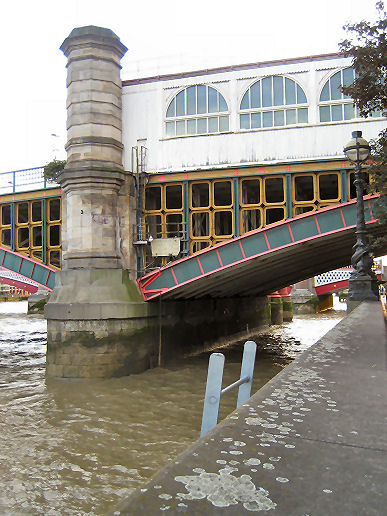


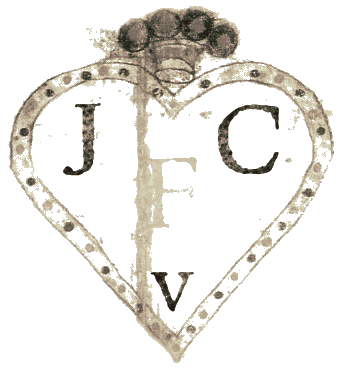
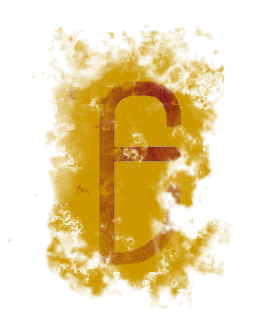 knowingly grin at some of the
ways in which the fabric of London
has evolved and corroded, too. Involving and brutal fun.
knowingly grin at some of the
ways in which the fabric of London
has evolved and corroded, too. Involving and brutal fun.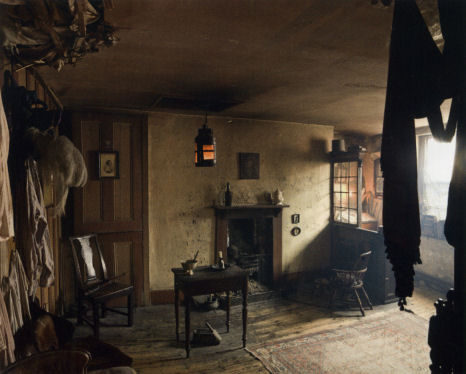
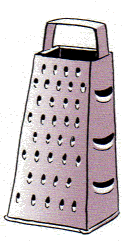 Well here's a thing, and a lovely thing too. It tries to be an artefact and
a work of art in itself, and I'd say it succeeds. The presentation is wacky,
sparse and illustration-dominated and the order of the
information is alphabetical but eccentric. The Dust chapter contains pages
devoted to sewage, rubbish, cemeteries and pea-soupers, for example. So this is not a book for looking
stuff up in. The facts
mostly match the presentation for originality, but it's arguable that they
play second fiddle. Another way of putting it is that if you don't like the
style you might find getting at the content a bit frustrating. But if you love the look
you'll love the book.
Well here's a thing, and a lovely thing too. It tries to be an artefact and
a work of art in itself, and I'd say it succeeds. The presentation is wacky,
sparse and illustration-dominated and the order of the
information is alphabetical but eccentric. The Dust chapter contains pages
devoted to sewage, rubbish, cemeteries and pea-soupers, for example. So this is not a book for looking
stuff up in. The facts
mostly match the presentation for originality, but it's arguable that they
play second fiddle. Another way of putting it is that if you don't like the
style you might find getting at the content a bit frustrating. But if you love the look
you'll love the book.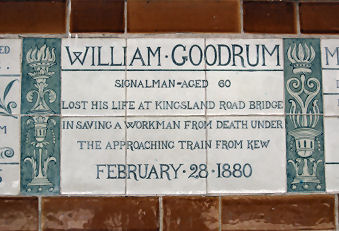
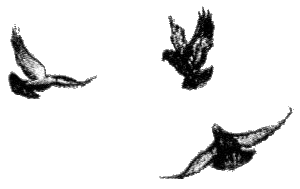
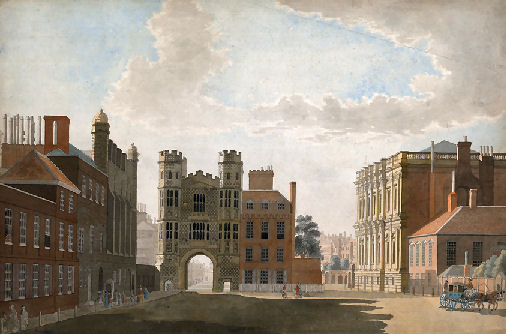
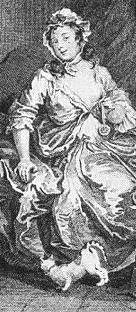
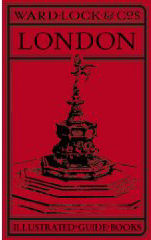
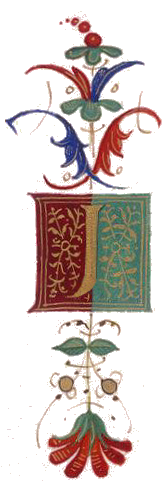
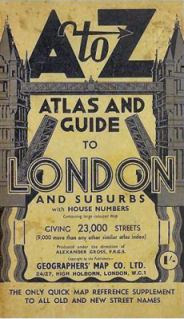 And
here's another book which to hold is to want, but you're not sure why.
It's a facsimile reprint of one of Phyllis Pearsall's first A-Z London
street atlases, printed in 1939, and so showing London before the Blitz
and and all the subsequent post-war redevelopments. And it's a facsimile
even down to the yellowing pages, with authentic spots and stains. But
what use is it? Well, as a Londoner you can look up where you were born,
where you live, where you used to live, that sort of stuff. It has those
little one-page maps of shops and cinemas, many long gone, where you might
remember buying your school uniform, say, or seeing your first French
film, the one where
Isabelle Huppert took off her...well you know the sort of thing. There's a
sweet fold-out Pictorial Map of London, with little 3D buildings on it,
stuck in the back. I liked the comprehensive annotated list of places of
interest too, from which I learned that the London Museum used to be in
Lancaster House by Green Park. This section also contains a list of
London's City churches, with asterisks by the ones which survived the
Great Fire; but this list itself would soon need revising as the Blitz was
just a few years away. A more arcane pleasure is the list of the streets
renamed with the coming of the LCC (London County Council) which was done
to rationalise confusingly similar street names which were confusingly near to
each other, or not. A book of incidental pleasures, then, but a sweet and
loveable little
thing, in its handsome slip case.
And
here's another book which to hold is to want, but you're not sure why.
It's a facsimile reprint of one of Phyllis Pearsall's first A-Z London
street atlases, printed in 1939, and so showing London before the Blitz
and and all the subsequent post-war redevelopments. And it's a facsimile
even down to the yellowing pages, with authentic spots and stains. But
what use is it? Well, as a Londoner you can look up where you were born,
where you live, where you used to live, that sort of stuff. It has those
little one-page maps of shops and cinemas, many long gone, where you might
remember buying your school uniform, say, or seeing your first French
film, the one where
Isabelle Huppert took off her...well you know the sort of thing. There's a
sweet fold-out Pictorial Map of London, with little 3D buildings on it,
stuck in the back. I liked the comprehensive annotated list of places of
interest too, from which I learned that the London Museum used to be in
Lancaster House by Green Park. This section also contains a list of
London's City churches, with asterisks by the ones which survived the
Great Fire; but this list itself would soon need revising as the Blitz was
just a few years away. A more arcane pleasure is the list of the streets
renamed with the coming of the LCC (London County Council) which was done
to rationalise confusingly similar street names which were confusingly near to
each other, or not. A book of incidental pleasures, then, but a sweet and
loveable little
thing, in its handsome slip case.